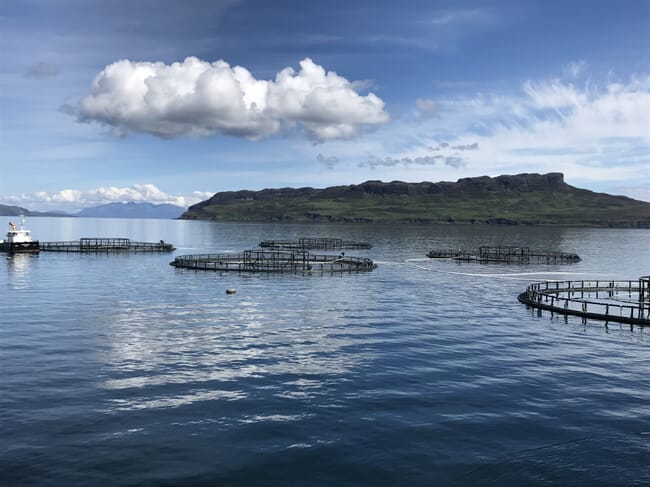The news came as the Marine Harvest Group posted record Q2 profits, following a challenging period for the salmon farming industry as a result of sea lice and amoebic gill disease (AGD).
MHS achieved an EBIT per kilo of €3.10 – putting it, alongside Canada, as the global firm’s most profitable geographic area. Operational EBIT in Scotland was €198 million in the second quarter of 2017, compared to €149 million in the corresponding quarter of 2016. This performance, the highest ever for the company’s half year results in Scotland, is largely due to the sale of bigger fish and a healthy market as a result of strong demand for salmon.
Managing director Ben Hadfield congratulated his staff for reducing the impact of sea lice and AGD.
“We were determined to tackle these issues and have undertaken a massive investment programme with includes the introduction of new technology along with improvements in the design of existing equipment,” he explained. “But most of all, we have a dedicated workforce who were determined to succeed.”
“This is a great result for MHS, our shareholders, our staff and local communities. These results have been achieved due to a lot of hard work focused on specific targets such as reduced sea lice numbers, more efficient growth and lower mortality levels,” he added.

The company says that the introduction of more wrasse and lumpsuckers as cleanerfish has helped reduce sea lice levels and they have announced plans to invest a further £3.5 million on farming cleanerfish. Other measures include the increased use of mechanical delousing systems such as Thermolicers and Hydrolicers, and the installation of louse skirts around the salmon farm nets. Total investment in sea lice control has amounted to £12 million in the last year alone.
Another factor attributed to the strong financial outcome so far this year has been the quality of the salmon grown by the company. More than 97% of the salmon produced has been rated as superior quality, which attracts higher prices.
The appetite for salmon continues to grow worldwide and the company continues to invest in new farms to meet demand. Applications for a salmon farm off the coast of Rum and at Sconser quarry have recently been submitted.
A new £93 million feed plant is currently under construction at Kyleakin quarry on Skye and a £26 million salmon hatchery is nearly complete at Inchmore in Glenmoriston.
Ben Hadfield commented: “We provide much needed jobs in some of the most fragile economies in Scotland and these two projects alone will provide almost 70 well paid permanent jobs. Our workforce is now close to 700, with a further 500 jobs in the salmon processing facility in Rosyth. Salmon farming is a thriving industry and a huge success story for Scotland and we will continue to invest to grow.”




